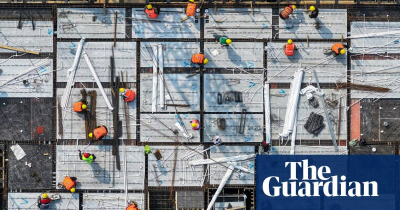The Guardian-China may be facing too many economic obstacles to hit its ambitious growth target for 2024
March 14, 2024 5 min 913 words
这篇报道针对中国经济的现状进行了全面的分析,指出了诸多困境。中国政府设定了2024年经济增长目标为5%,但面临着通缩、房地产市场下滑和内需疲软等多重障碍。报告指出,房地产市场问题仍然严重,消费者信心难以持续恢复,同时中国政府采取的政策措施也在受到质疑。此外,报道还提到了中国政府不再公布一些经济数据,引发了外界对数据真实性的质疑。总的来说,这篇报道客观地分析了中国经济面临的挑战,给人以深思。
Chinese leaders who have been predicting an end to the country’s deflation would have been heartened by official statistics this week showing consumer prices had increased for the first time in six months.
The news came as the ruling Communist party used its annual gathering in Beijing to declare the economy would clock up growth of “around 5%” in 2024. However in his speech, Premier Li Qiang warned dutiful delegates they “should not lose sight of worst-case scenarios and should be well prepared for all risks and challenges”.
And little wonder; conventional economics suggests achieving this level of growth, while also hitting other targets – including increasing inflation to 3% – won’t be easy.
The country’s reported 5.2% GDP expansion pace in 2023 looked impressive when compared with other large economies, but it pales in comparison with the 7.3% average rate in the decade to 2019 or the rollicking 10.5% clip in the decade prior.
There was also little hint from Li or other leaders at the week-long meeting of how a similar growth rate might be achieved in 2024. Indeed, the budget deficit was forecast to shrink this year to 3% of GDP from 3.8% last year, a contraction that would serve as a brake on growth.
Official defence spending is earmarked to rise 7.2%, a rate unchanged from 2023. To the extent it reflects actual military outlays, this budget line item won’t be an additional growth spur either.
The government did unveil plans to sell 1tn yuan ($US139bn) in bonds to fund more spending. But in an economy of about 126tn yuan in size, those bonds will only amount to about 0.8% of GDP.
Property market headaches continue
The risks to the economy are both internal and external. Much has been made of the ailing property sector – the world’s largest – which shows little sign of a revival.
Economists at ANZ, an Australian bank, last week estimated China was sitting on 3bn square metres of unsold residential property.
If they built nothing else, “it would take 3.6 years to digest the inventory, much longer than the previous downturn of 2.3 years in 2014,” economists Raymond Yeung and Xing Zhaopeng said.
In fact, residential floor space sales sank 17% last year, to an amount more than 60% below the 2021 peak.
“As sales are unlikely to improve in the next few years, the time for clearance will be much longer,” Yeung and Zhaopeng said.
So long as households see their main asset dwindle in value, it’s hard to see any sustained pickup in consumer confidence.
Hidden statistics
China famously stopped reporting urban youth unemployment numbers after that figure topped 21% last June. The move stoked suspicions that other negative numbers would stop appearing.
Prominent economic historian Adam Tooze this week noted the trend of cutting back on data releases is not new, with the number of indicators made available from the national bureau of statistics back down to levels last seen in the 1990s.
As @adam_tooze highlights, China's data releases are back to 1990s levels when the economy was just taking off - and a lot less sophisticated. pic.twitter.com/qpE8M6mgJq
— @[email protected] (@p_hannam) March 13, 2024
International interactions, though, can provide ways for outsiders to gauge the economy’s health. As the world’s second-largest economy – and its largest consumer of most commodities – many nations have a lot riding on how China performs.
Australia is one of them, with the Chinese market taking as many exports as its next three or four largest markets combined. Its biggest company, BHP, had been basking in what its chief economist Huw McKay dubbed an “unlooked-for rally”.
BHP says it has been surprised by record demand for iron ore in 2023 even as China’s real estate market cratered.
Chinese mills managed to produce 1bn tonnes of steel for the fifth year in a row in 2023 and “we think we’re going to get [that level for] another year”, McKay told the AFR business summit in Sydney this week.
Property now takes up about a quarter of China’s steel output, down from more than a third just a few years ago, he said. Some of that metal, though, is turning up in China’s booming exports of cars. The country already vies with Japan as the world’s largest auto exporter with its electric vehicle industry apparently only just getting started.
The global effort to cut greenhouse gas emissions, such as it is, also hinges heavily on China’s relatively cheap solar photovoltaic panels, wind turbines and batteries.
However, North America and Europe are busy trying to expand those industries themselves and they will probably throw up barriers particularly if elections are in the offing, as they are in the US.
Such tension is also quite separate from the tussles between the US and China over access to the latest semiconductors, mobile communications or other technology deemed critical for military, artificial intelligence, and other strategic industries.
If all goes to plan for Beijing, we might well see China boast of another successful year of 5% growth this time next year. Achieving that goal, though, looks like requiring a lot of luck at the very least.

